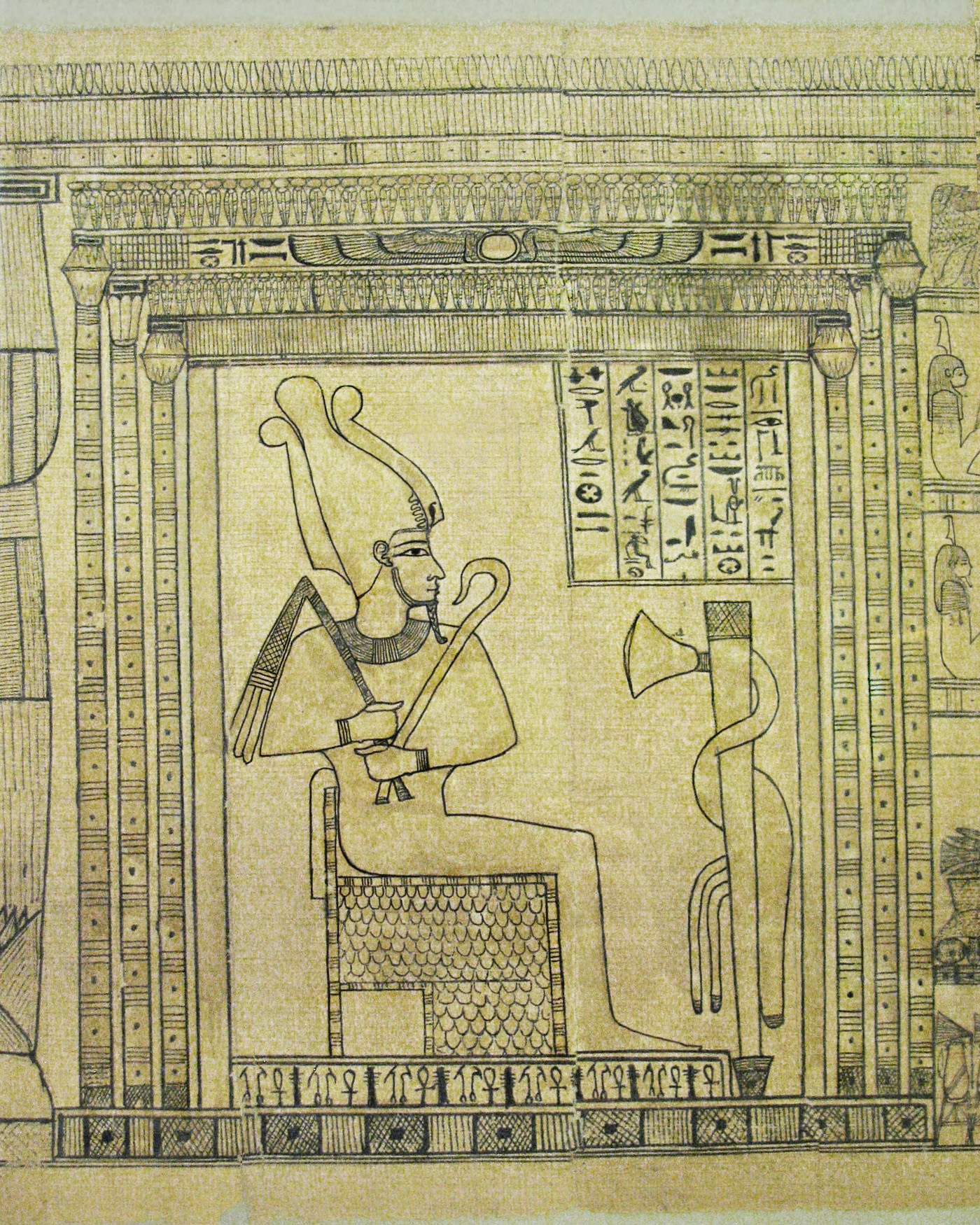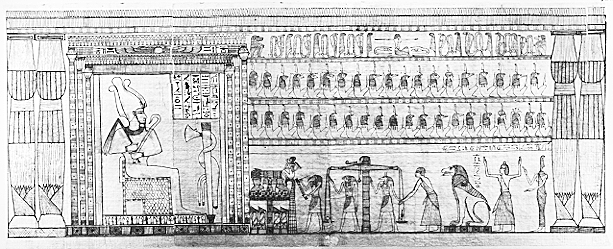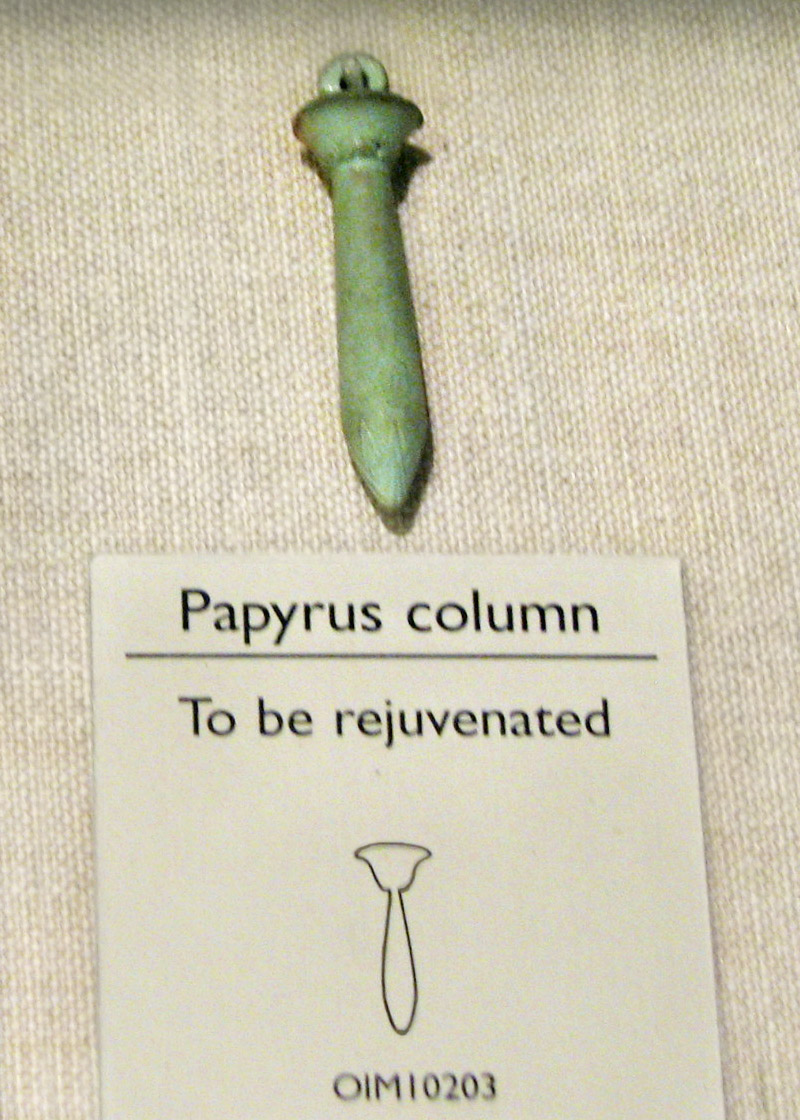
Ptolemaic Period, ca. 332-30 BCE
Gift of Mrs. Elizabeth Milbank Anderson, 1919, OIM 10486
Photo ©Joan Ann Lansberry, 2010

Ptolemaic Period, ca. 332-30 BCE Gift of Mrs. Elizabeth Milbank Anderson, 1919, OIM 10486 Photo ©Joan Ann Lansberry, 2010 |
|
"Papyrus Ryerson (OIM 9787; R) and Papyrus Milbank (OIM 10684; M) were acquired in 1919 by the first field expedition of the Oriental Institute." (From _The Egyptian Book of the Dead: Documents in the Oriental Institute Museum at the University of Chicago_, edited by Thomas George Allen)
All the papyrus sections are shown in a downloadable pdf. Meanwhile, this small image at the Museum website gives an idea of this scene in context:
 © 2006 Oriental Institute, University of Chicago "This section of the Book of the Dead shows the deceased standing to the right, his arms lifted in adoration of the gods. In the center, the falcon-head Re and the jackal-headed Anubis weight the heart against the feather of truth. The ibis-headed Thoth records the judgment on a papyrus scroll. To the left, Osiris, the main deity of the afterlife, sits in attendance. The 39 seated figured arranged in rows above the scenes are the judges of the 'Hall of Two Truths' who listen to the testimony of the deceased." Note the papyrus stem and umbel wrapped around the pole before Osiris.
 OIM 10203 Photo ©Joan Ann Lansberry, 2010
The pole around which the papyrus is wrapped is likely an Imiut, also known as the Anubis Fetish or Anubis Emblem. The two tails we see are from an animal skin which has been rejuvenated attached to a rod secured to a container, which usually had magical enchantments. All of this was to protect the dead. |


